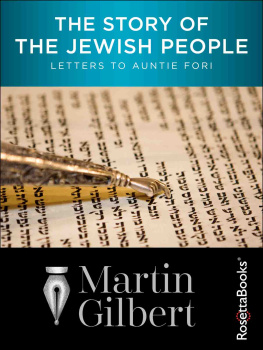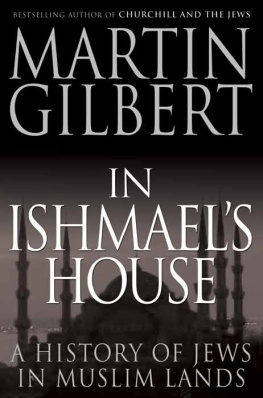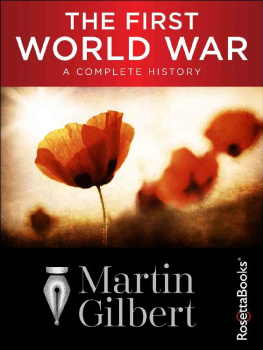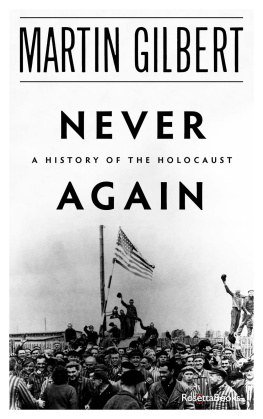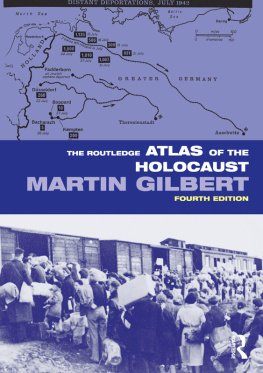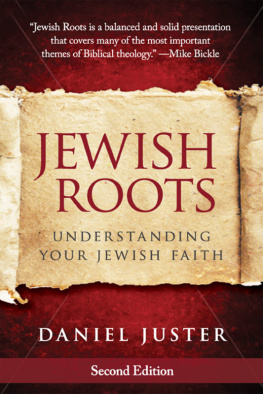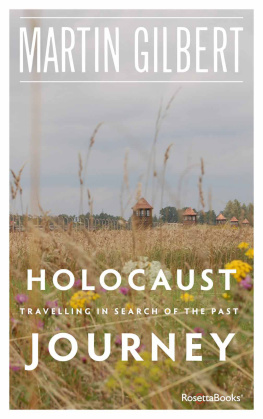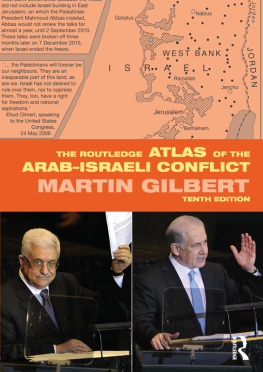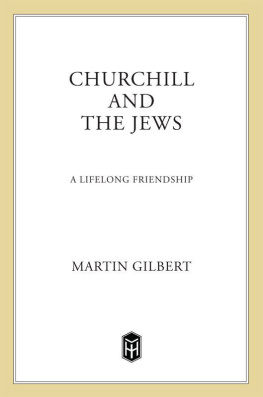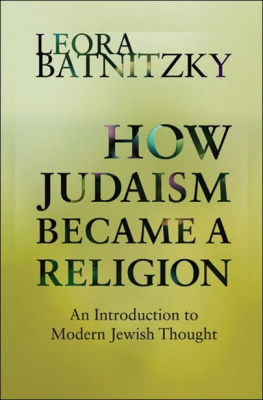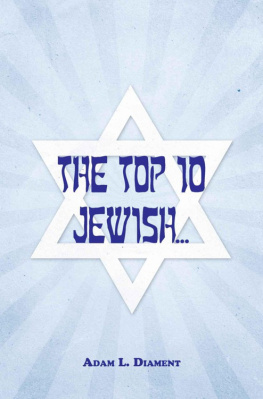The Story of the Jewish People
Letters to Auntie Fori
Martin Gilbert
Copyright
The Story of the Jewish People: Letters to Auntie Fori
Copyright 2002, 2014 by Martin Gilbert
Cover art, special contents, and Electronic Edition 2014 by RosettaBooks LLC
All rights reserved. No part of this book may be used or reproduced in any form or by any electronic or mechanical means, including information storage and retrieval systems, without permission in writing from the publisher, except by a reviewer who may quote brief passages in a review.
Cover design by David Ter-Avanesyan/Ter33Design
ISBN e-Pub edition: 9780795337352
To Aunt Fori
ACKNOWLEDGMENTS
Erica Hunningher and Kay Thomson read these letters as I was writing them, and gave me the benefit of their wisdom, as did Rabbi Louis Jacobs, who read the letters dealing with the Bible, faith and tradition; Ralph Blumenau, who helped me with regard to many historical questions of fact, interpretation and balance; and Esther Poznansky, a wise guide. Auntie Fori has certainly been the gainer from their scrutiny.
INTRODUCTION
In the summer of 1957 I found myself in the Garden of Eden. Having left the army, where I had been a National Serviceman for two years, I travelled southward through the Balkans and into Turkey, earning money by teaching English, and using it to travel further. After a month wandering through southern and central Anatolia I reached the most easterly eastern region of Turkey, almost a thousand miles from Istanbul. There I found myself in sight of the 15,500-foot snow-capped conical peak of Mount Ararat, the peak on which Noahs Ark is said to have alighted as the flood waters receded.
Four rivers flow from the high plateau which I had reached: the Euphrates, the Tigris, the Coruh and the Aras. In the words of the Bible: And a river went out of Eden to water the garden; and from thence it was parted and came unto four heads. The Bible gives the names of these four heads, or tributaries, as Euphrates, Pison, Gihon and Hiddekelthat which goeth south towards the east of Assyria. The Hiddekel is the river Tigris of today.
So here I was in the Garden of Eden, standing by the banks of the River Aras, a mere twelve miles from the upper reaches of the Euphrates. Nearby were two Kurdish camel drivers. Contemplating the isolation and grandeur of the scene, I felt that I was at the very end of the road, at its remotest, most adventurous point. Then, in the far distance, I saw a small car making its way along the rough road in my direction. Eventually it arrived at the point in the roadside where I was sitting. Two German students got out. Pointing eastward, where the road continued, one of them demanded: Is this the road to India? I was mortified. It was indeed the road one would take to India, if one continued eastward for another two thousand miles. But I had imagined, sitting there in Eden, that I was at the end of the road, not at a mere way-station along it. At that moment I determined that one day I would continue along that eastern road and reach India.
In Athens, on my way back to England, I met Neil Malcolm, a young manmy agewho was also going to Oxford. I told him of my experience in the Garden of Eden, and he agreed to go back with me the following summer, to try to reach that spot where I had sat within sight of Mount Ararat, and then to continue on to Indiahowever long or rough the road might be, however many rivers, deserts and borders had to be crossed. When Neil and I took the Channel ferry from England to France in the early summer of 1958, each of us had several letters from Indian students whom we had met at university. One of my letters was from my friend Ashok. If you find yourself in Delhi, he said, do look up my mother.
A student feels he can navigate the world without letters of introduction to other peoples parents. But long before reaching Delhi, Neil Malcolm and I had both become quite ill. A potent mixture of kaolin and morphine, provided in a Teheran hospital by an American nurse, Nurse Choatewho was said to have been the Shahs nursehelped ward off the worst, but her magic potion had run out by the time we left Afghanistan and crossed the Khyber Pass, to make our way across Pakistan by train to Lahore, and then on to Delhi. There, Neil and I set off in different directions, having agreed to meet in Bombay, to return to Britain by sea, which we did. Forty-three years later, telephoning Neil to tell him about the book which was the final end-product of our long-ago Indian journey, I was shocked to learn that he had died three months earlier. He was my contemporary and friend.
Neil set off for other Indian cities, and I made my way to Ashoks mothers door in Delhi. Welcoming me as if I were her own son, she introduced me to her two younger sons, Aditya and Anil, and to her strikingly handsome husband. His name was Braj Kumar Nehruknown colloquially as BK, and affectionately as Bijju. He was a cousin of Jawaharlal Nehru, then Prime Minister of India.
BKs wife, Mrs Nehruwho insisted that I call her Auntie Forinursed me back to health. I had felt so ill when I reached her front door that I have no doubt she saved my life. Her medicine was not the kaolin and morphine concoction of Nurse Choate in Teheran, but an equally effective mixture of rice and yogurt. Within a week I was no longer weak or groaning. Within two weeks I was cycling along the broad avenues of New Delhi, and even penetrating the maze of Old Delhi. One morning I went to the vast open space in front of the Red Fort and stood with an estimated one million Indians to hear Jawaharlal Nehru speak to the hushed multitudea vast sea of white stretching, as it seemed, to the horizon. It was the eleventh anniversary of Indian independence.
As soon as I was completely recovered, Auntie Fori gave me her own letter of introduction and packed me off by train to the Hindu holy city of Benares, where I stayed for a while, working in an orphanage. On my return to Oxford, we kept in touch by letter and postcard. In the 1960s I visited her in Washington, where BKwhom I was bidden to call Uncle Bijjuwas Indias Ambassador. Later, when he was Indian High Commissioner in London, we saw a good deal of each other.
Auntie Fori was a warm Indian woman, beautiful in her sari, deeply concerned about the welfare of India. Before being posted to London, Uncle Bijjuwith Fori at his sidehad been governor of the most easterly region of India, stretching to the Chinese and Burmese borders: the Seven Sisters of Assam, Nagaland, Manipur, Tripura, Mizoram, Meghalaya and the North East Frontier Agency. Leaving London, he still had a distinguished career in front of him, first as Governor of Jammu and Kashmir, then as Governor of Gujarat. He also served as Chairman of the Investments Committee of the United Nations, and was at one point spoken of as the next Secretary-General of the United Nations. At the age of eighty-two he had been asked to become Indias Foreign Minister. My ego was greatly titillated, he wrote in his memoirs, but I retained enough common sense to refuse the offer on grounds of age.
Auntie Fori and I had continued to correspond since 1958I have a large box crammed with her lettersbut after the mid-1970s we did not see each other again for more than two decades. In 1998 Auntie Fori and Uncle Bijju both reached the age of ninety. My own son David was then twenty-one, my age when I had gone to India. He and I travelled to India together, flying rather than going by road and railneither Iran nor Afghanistan being as inviting to travellers as they had once been. I wanted him to meet the ninety-year-olds who had been so good to me forty years earlier.

